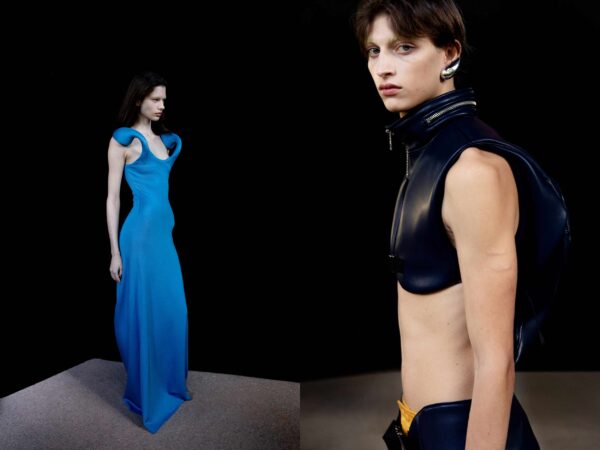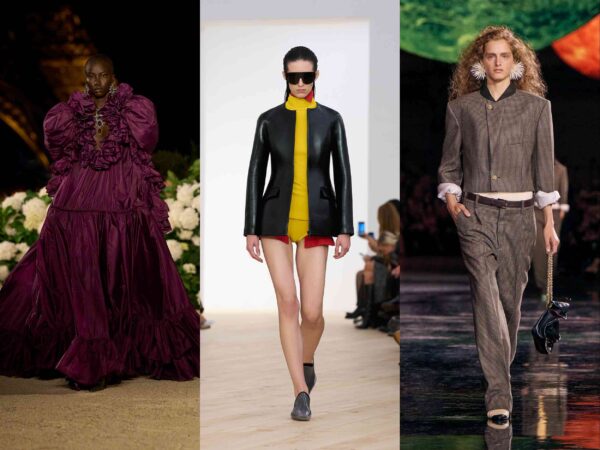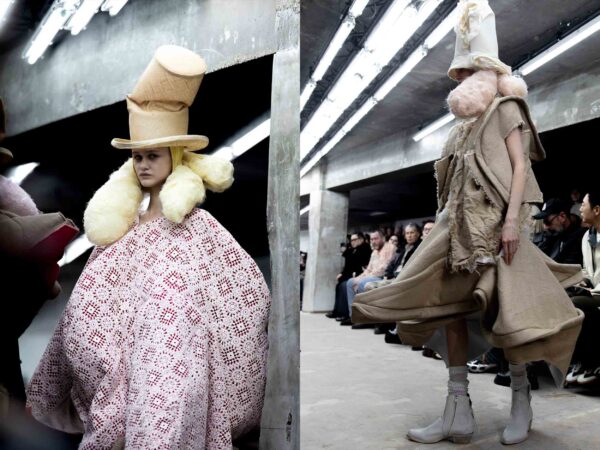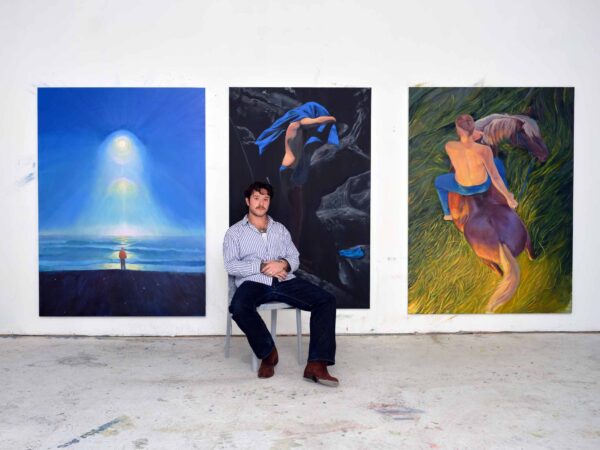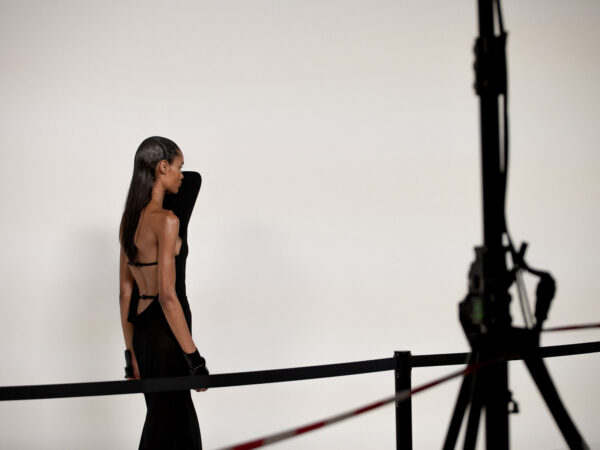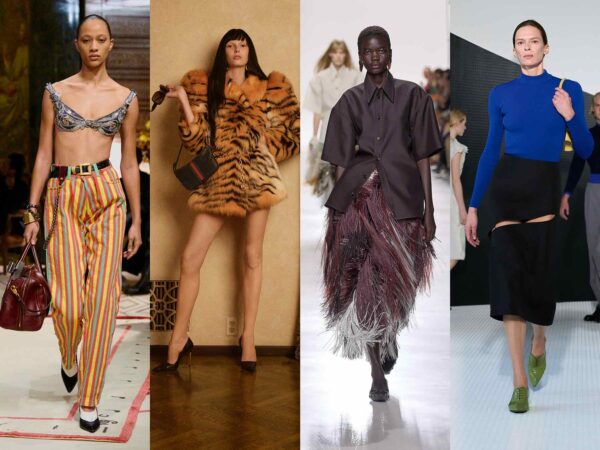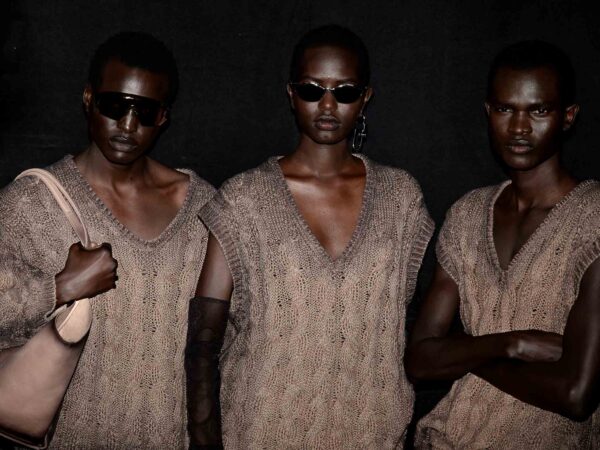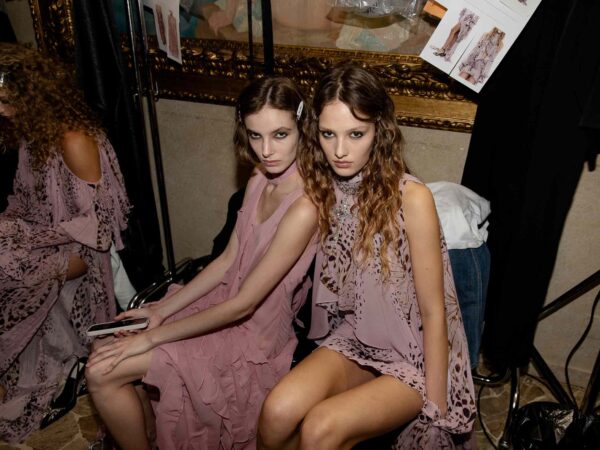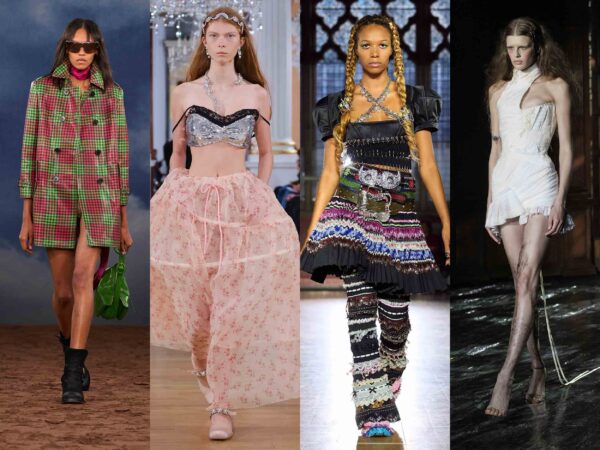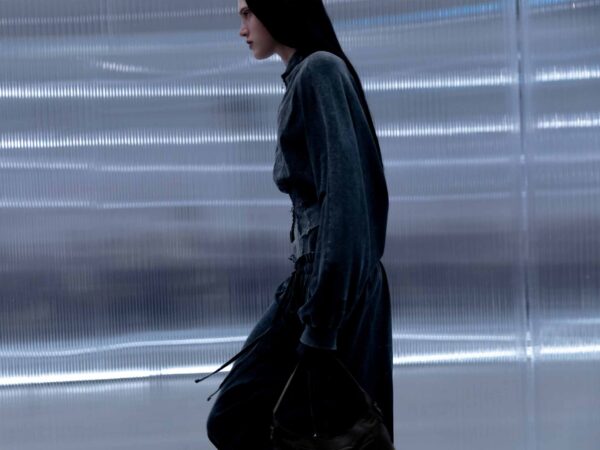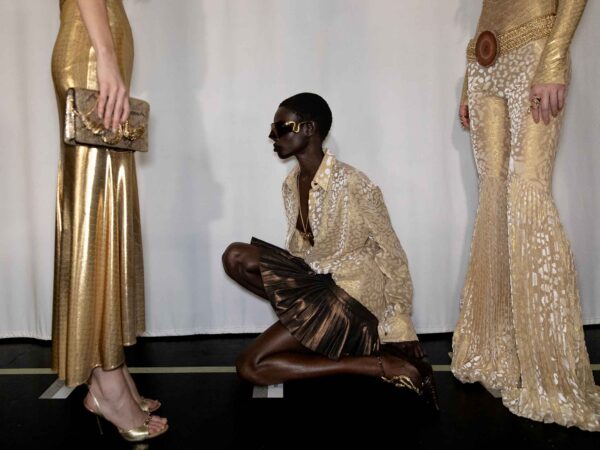
The breakout London artist speaks on childhood memories, Brutalist architecture, and the importance of perception in his work
Johannes Warnke is a big thinker. The London-based designer crafts ethereal gowns, intricate headpieces, and whimsical shoes—creations that bring mind to Hilma af Klint’s paintings with their perfect geometry, their rich color. The boundlessness of Warnke’s mind is also evident in his mannerisms; he speaks deliberately and introspectively, pushing forward the belief that fashion is simply a practical artistic medium—his garments are his masterpieces, no different from a sculpture, or a novel, or a symphony.
Warnke was raised in the German countryside, and studied at Central Saint Martins in London. Since his graduation in the summer of 2020, his creations have garnered attention from the spheres of high fashion and performance: You might have seen the dress he designed for Lady Gaga, which she wore in her “911” music video, or the several gowns that outfitted Post Malone’s choir during the 2021 Grammys. In an interview with Document, the up-and-coming designer discusses his roots in modern dance, a penchant for brutalist architecture, and the visions he holds for the future of his career.
Morgan Becker: What are your earliest memories associated with clothing?
Johannes Warnke: Oh god, so early. I remember my mom—she used to run dance classes, and she wore really nice black, shiny shoes and a black dress with red lipstick. Whenever she was going to those dance classes, that was kind of her outfit. Then, during kindergarten, I was always cutting these paper magazine figures from advertisements—playing with them and redressing them. There was one kindergartener that looked especially very fashionable. I was just sitting in the sandbox staring at her all day.
From the start, I was very much interested [in clothing]. I think I was maybe four years old when we went by a shopping mall window. I asked my mom, ‘Who makes these clothes?’ That was the first time I got to know what a fashion designer was, or what fashion meant. Since then I think it was always my dream job.
Morgan: Tell me about your graduate collection, Windows of Perception. What do you cite as your inspirations?
Johannes: Windows of Perception is conceptually inspired by the idea that we are in a very disconnected world that is, at the same time, hyperconnected. We are watching each other’s Instagram stories all day long; we know so much about each other, but we don’t really participate in each other’s lives.
I was looking into a German movie called Wings of Desire, which is very philosophical and poetic. It depicts Berlin in the late 1980s: You can see post-war Berlin, and all these grey brutalist buildings, and the wall between East and West Germany. The storyline is amazing—it’s basically two old men that wear long suits and are angels. They watch the city from above. One of these angels falls in love with a trapeze artist and turns into a human. And then this black-and-white movie flips into color—that kind of shows how [the angel] transforms from a non-sensory [being], that can just observe from a distance, into a person that can taste, feel pain, smell, breathe, and experience the world.
Morgan: How did these concepts visually manifest in your clothing?
Johannes: I was very much inspired by brutalist churches—they sum up visually what I’m talking about conceptually. They’re really grand, grey concrete buildings, but then they have these delicate stained-glass windows that bring in this colorful light. The sculptural and round shapes [in my graduate collection] were inspired by the arches and the windows [of the churches], and the sectioning of the windows. When you see looks one to look six in a row, the collection fades from white into orange into red, then from red into green into purple into yellow. The gradient depicts the color that comes in through the windows. A brutalist church is a space that immediately has a meditative effect on a person, and I find that quite fascinating—that architecture can create that kind of environment.
Also, sustainability was a big point for me. I worked with sustainable silk—cruelty-free silk, from a silk supplier called Cocccon. And I worked with hand-dyeing techniques: cornstarch, resin, and upcycled tapestries and wind chimes. All my dresses were draped without causing any fabric waste.
Morgan: What was it like completing your education amid the pandemic?
Johannes: For me, graduating during the pandemic—and it sounds maybe a bit weird—was almost a benefit. It is a horrible thing to happen to the world. But it made us stop, and forced us to think. On the one hand, the pandemic forced me to go home to the German countryside and literally be by myself. I had to rely on intuition, and I think that benefitted my designs—I just trusted, and I went for it. No distractions.
I’m definitely conceptual and emotive at the same time with my design process. It’s always a balance. I have to have the context and the reason behind why I design something. But, at the same time, my work has to be emotionally affecting both to the viewer and to me.
Morgan: Can you elaborate on the sensory elements within your work?
Johannes: With this mindfulness, yoga, meditation, self-help movement, I think people are really craving experiences. So, I incorporated experiential features in my garments. I have wind chimes in my shoes, so when people walk it makes a sound. I have these accessories that are blinders—they block out distractions from the outside world.
Morgan: Does that relate to your background in modern dance? What are its tangible effects on your designs?
Johannes: Actually, [my background is] in a lot of different dance forms: modern dance, ballet, hip hop, contemporary, acrobatics, tap dance. I did a lot of different styles from age seven until age twenty, I would say. Dance would have probably been my second career—it’s always a big part of my work. I’m very focused on, ‘How does it look when the model moves? What fabrics are comfortable to wear?’
That’s also where perception comes in. Perception is the idea that when you see something, you also feel it or smell it. When you see cherries, you also automatically know how they taste. That’s how you get emotionally attached to things—and that’s so important in fashion. If you see a silk dress, you automatically want it because you know how soft it might feel on your skin. That’s why I’m very aware of what material I’m using—how it feels on the body, how it works with the body’s movement. I do very structured pieces, but they don’t trap the body, they actually enhance its movement. I think that’s a very important part of my work.
Morgan: Did you expect the surge in popularity of your designs, particularly among pop culture figures?
Johannes: No. My intention was to really be true to myself, and do something that I feel is a hundred percent me. When you want to create something that hasn’t been done thousands of times before, it’s very important to not think of trends, not to be calculated—not to think, ‘Oh, I want this to be worn by Britney Spears or Ariana Grande.’ That will diminish your creativity. I think what you have to do is create a universe and go for it a thousand percent.
Morgan: What’s a goal of yours for the next year?
Johannes: ‘Goal’ is a hard one, I think, because it’s so focused on ‘end goal.’ Mine is actually to just grow in what I do as a creative practice. Every day is part of that goal.
Morgan: What about over your lifetime?
Johannes: Eventually, I would love to work way more with performance, and I would love to do exhibitions. I would definitely like to see my work going in a more artistic direction. At the same time, I’m setting things up to be sold. It is sort of a balanced business between very artistic pieces and functional ones that can be purchased. What I’m not so interested in is creating a ready-to-wear brand with seasonal shows. My strength is more creativity and concept. I think I will definitely continue working with performance artists, ideally even theaters—dance theaters. I want to continue my brand as a fashion brand, but also continue my work as an artist.



